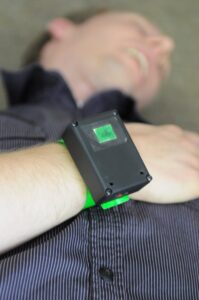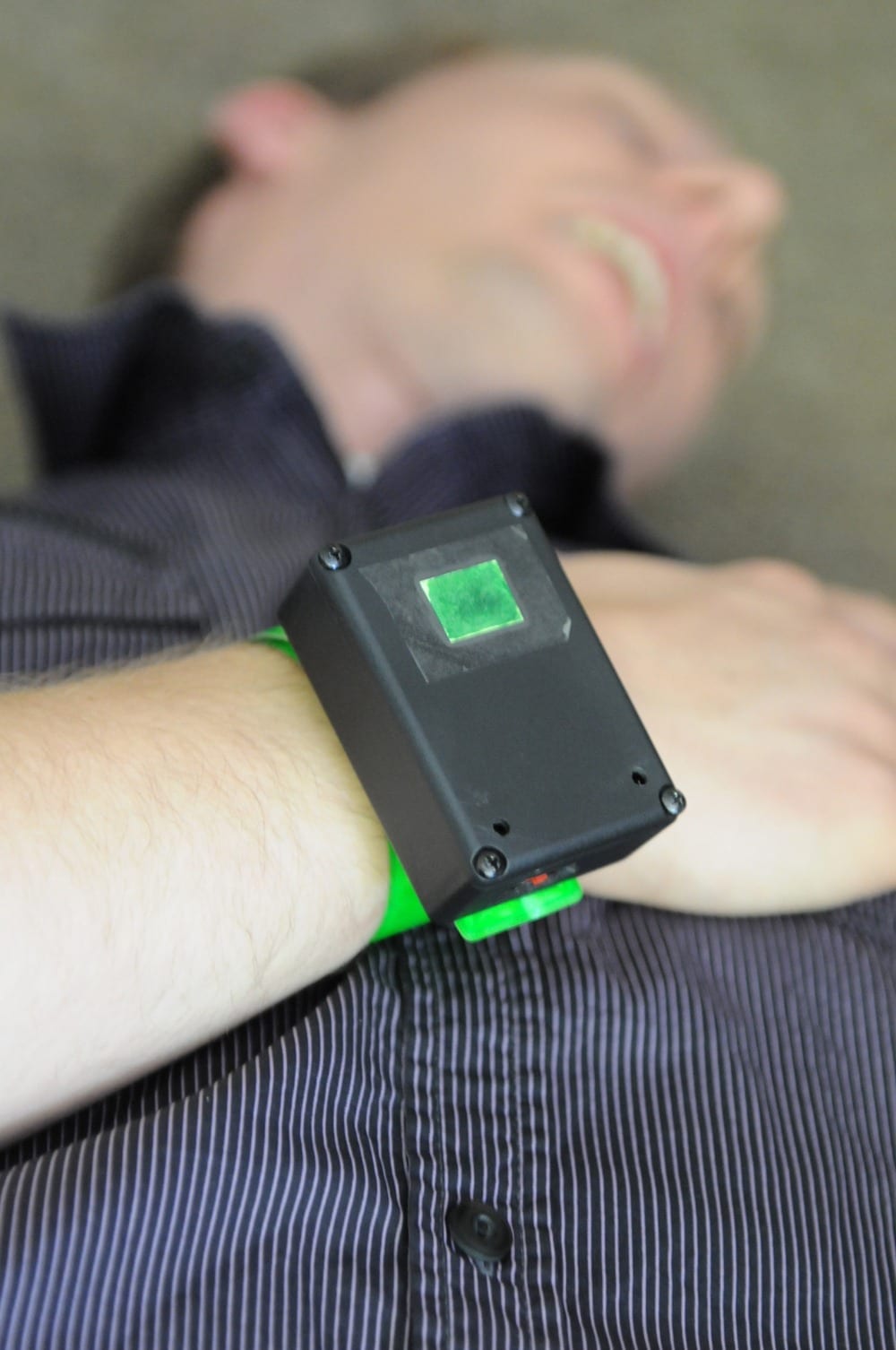
When large-scale emergencies occur, it often takes far too long before victims receive the care their injuries demand.
Now a new electronic system has been designed to support helpers during the initial assessment of victims and to speed up patient care.
When a major catastrophic event occurs, every second counts. During instances such as natural disasters, terrorist attacks, accidents in chemical plants, or train crashes, many human lives depend on how well the rescue services are coordinated. The better relief forces communicate with each other, the more victims they can rescue. The swifter the initial assessment of those affected by the disaster (during which they are tagged according to the severity of their in- juries), the faster they can be evacuated and taken to suit- able nearby hospitals. At present, this initial assessment – or “triage” as the professionals call it – is carried out using colored paper tags which first responders attach to victims. The color coding (green, yellow, red, and black) indicates the severity of the injury and the treatment priority. Pulse and respiratory rate are noted on the tags by hand. This collected data summarizes the condition of the victim at the time of triage, but the manual process means frequent up- dates are seldom possible. Another drawback is that the paper tags are easily damaged during poor weather conditions.
Better first response medical care, optimized emergency management, and the more effective operation of rescue forces in response to large-scale accidents are the goals that the EU’s BRIDGE project is trying to promote (www.bridgeproject.eu). The EU is funding the project to the tune of 13 million euros, and the Fraunhofer Institute for Applied Information Technology FIT in the German city of Sankt Augustin is responsible for its overall technical coordination. With eTriage, FIT researchers are developing a system to replace the paper tags. The system will locate casualties and transmit their vital signs such as pulse, res- piratory rate, and blood oxygen to emergency response control centers in real time.
Emergency management with GPS and RFID
eTriage consists of several elements. Instead of using paper tags, first responders put color-coded armbands made of light, bendy plastic on casualties. These triage armbands are the cornerstone of the system and comprise a GPS sensor, an RFID chip, and a net- work component for communication with the data network. Unharmed people receive only an armband with GPS sensor, whereas unstable and severely injured victims have sensors attached to their bodies that transmit vital signs to the emergency response control center. The armband functions as an interface and network node. The data can be transmitted via a ZigBee – a slow but far-ranging and economical radio network – but also via WLAN or the cellular network.
“This is a big advantage, because communication is often the first thing that breaks down during a catastrophe. We use the other networks when they’re available, but when they’re not, we simply build our independent, fully functioning ZigBee network. The required infra- structure is already there in the armbands. It works automatically – there’s no extra work involved,” explains Erion Elmasllari, a scientist at FIT. Triage relays attached to first res- ponders’ belts additionally function as caches, data backup and data transmitters should the ZigBee network ever collapse.
The Latest on: First response medical care during catastrophes
[google_news title=”” keyword=”First response medical care during catastrophes” num_posts=”10″ blurb_length=”0″ show_thumb=”left”]
via Google News
The Latest on: First response medical care during catastrophes
- Dozens of deaths reveal risks of injecting sedatives into people restrained by police: ‘It’s a recipe for disaster’on April 28, 2024 at 6:30 am
Mounting deaths illustrate an often-hidden way fatal U.S. police encounters end: not with the firing of an officer’s gun but with the silent use of a medical syringe.
- Medical Reserve Corps marks 20th anniversaryon April 27, 2024 at 5:46 pm
ABINGDON, Va. – The Southwest Virginia Medical Reserve Corps hosted a 20th anniversary celebration on Saturday. The local volunteer organization, one of 800 units throughout the nation, is comprised ...
- Summit promotes emergency preparednesson April 27, 2024 at 8:00 am
Residents of Sun City, Sun City West, Surprise and surrounding communities learned about planning for disaster at an emergency preparedness summit held April 23 at First Baptist Church of Sun City ...
- Sacramento-area first responders train for large-scale natural and human-caused disasterson April 24, 2024 at 6:54 pm
The exercise, dubbed “Shake-Ramento,” is “a full-scale test designed to evaluate many aspects of a Type I National USAR deployment to an earthquake and major flooding,” according to the hosting agency ...
- Here’s what you can get tax-free this weekend for your Texas disaster prep checkliston April 24, 2024 at 12:30 am
The state of Texas is making it easier to begin preparing for hurricanes and other natural disasters ... on emergency preparation supplies during the first of three annual sales tax holidays ...
- When Disaster Strikes: How Mobile Hospitals Save Liveson April 22, 2024 at 4:02 am
Mobile hospital, also known as field hospital or deployable medical unit, is game-changers in crisis response.
- How do we fix the Steward Health Care disaster?on April 20, 2024 at 5:06 am
In the 1920s, Charles Ponzi was so good at this particular skullduggery, they named it after him. In 2009, Bernie Madoff was sentenced for the largest Ponzi crime in history. And now, with the ...
- Revisiting the Boston Marathon Bombing a Decade Lateron April 19, 2024 at 8:40 am
Meyer is an emergency medicine physician and a specialist in disaster preparedness.
- Sudan: One year on, this humanitarian catastrophe must be addressedon April 14, 2024 at 11:41 pm
The crisis in Sudan is one of the worst the world has seen in decades, with more than 25 million people in dire need of humanitarian assistance—but the global response is a drop in the ocean.
- City of Austin looking for help in handling disasterson April 4, 2024 at 4:41 pm
APH says they may help during disasters ... care could be like This is what Anna Escamilla, a community emergency response team instructor and mental health professional, says is necessary for our ...
via Bing News











